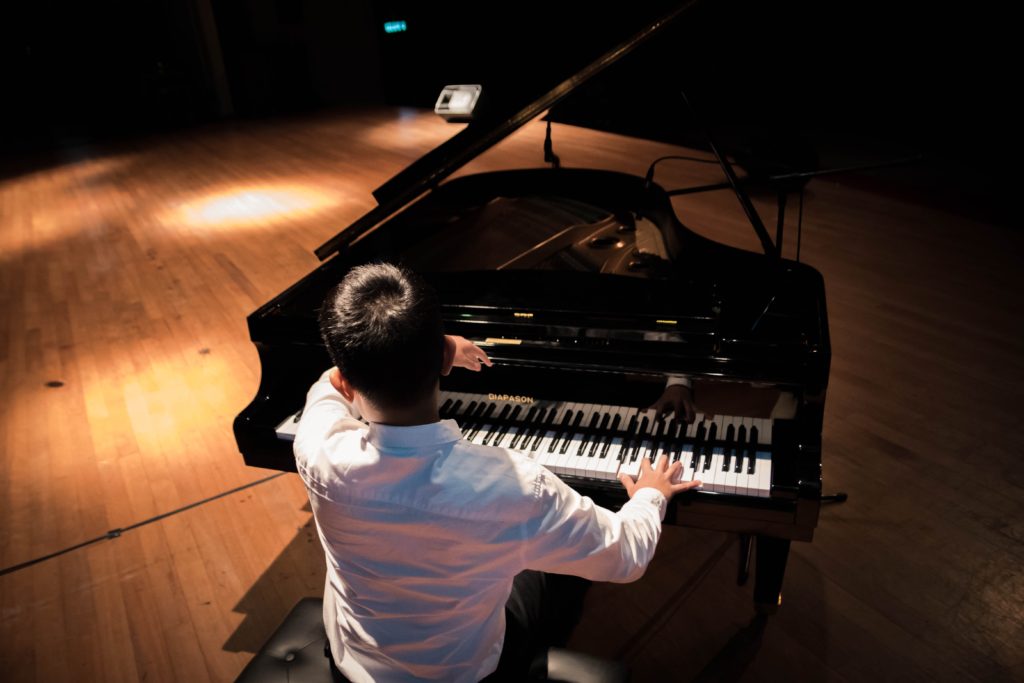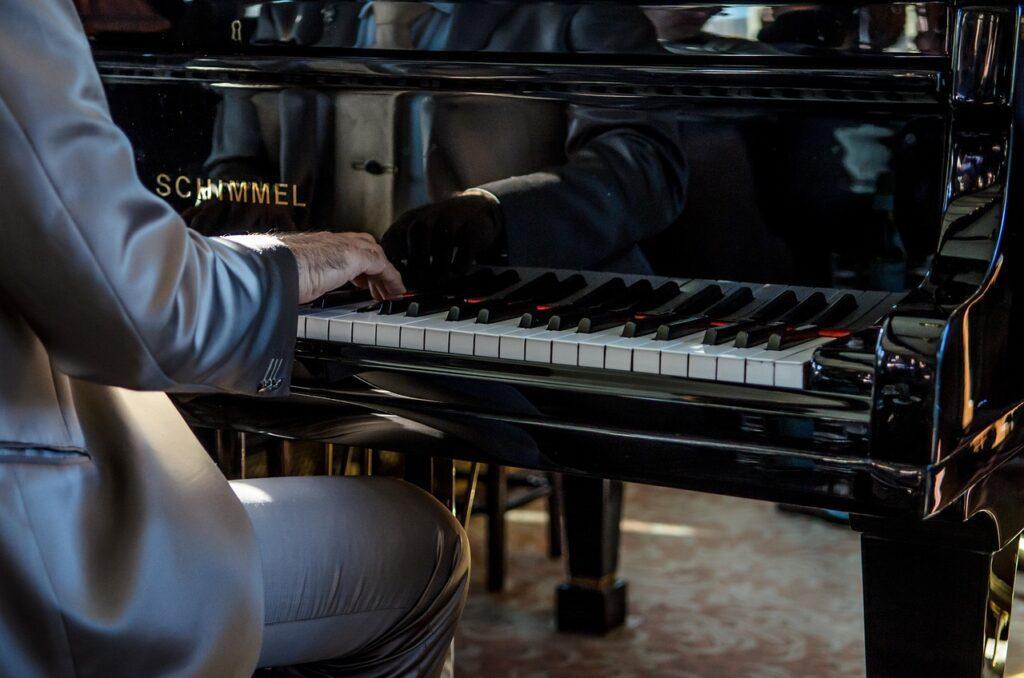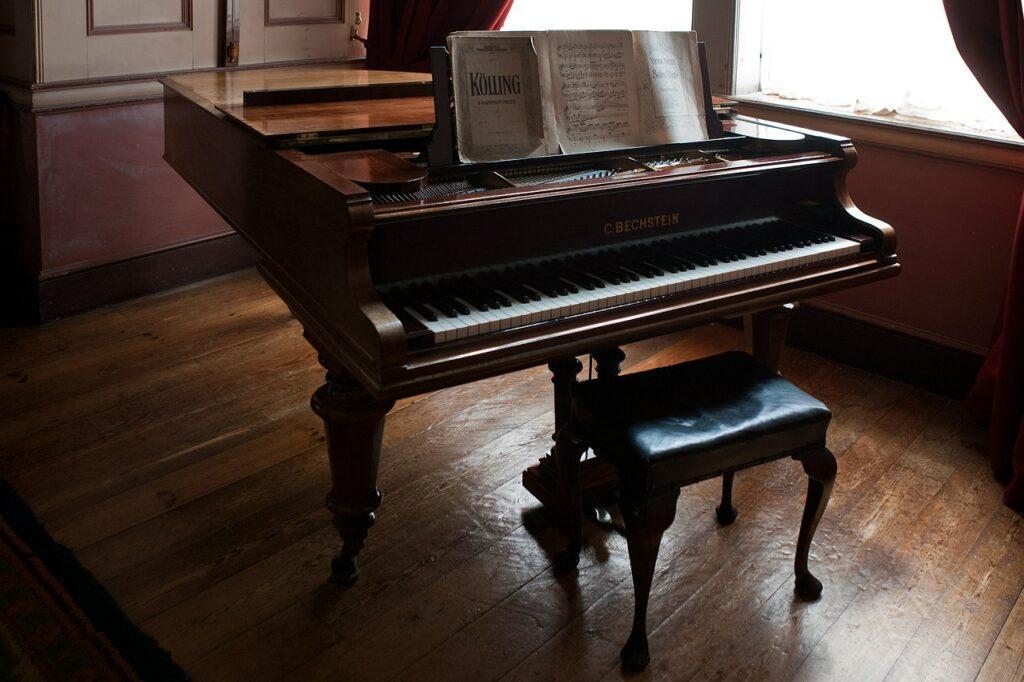Estimated reading time 4 minutes
Table of Contents
Introduction
Do you get frustrated when your hands-separate playing doesn’t seem to help with playing piano with both hands? Find out what determines how hard it’ll be to play with both hands and what you can do about it. Read more to answer the question, “Why doesn’t my hands-separate piano practice help with hands-together playing?”
This post uses musical terms. For definitions, see the Glossary at the end of the article.

When My Hands-Separate Piano Practice Does Help with Hands-Together Playing
“Why doesn’t my hands-separate piano practice help with hands-together playing?” How well your hands-together practice goes will depend on the difficulty level of the piece when compared with your skill level.
For some music, you might be able to easily shift from hands-separate work to hands-combined playing. It’s the music itself that determines how easy it’ll be to make that transition. For simpler music, try titling the book 90o to the right. For a detailed discussion of this strategy:
For other types of music, it’ll be easier to play hands-together than hands-separate. For more information:

When My Hands-Separate Piano Practice Doesn’t Help with Hands-Together Playing
“Why doesn’t my hands-separate piano practice help with hands-together playing?” Because sometimes you just need a little help. In other words, for complex pieces, you might find that you need to hear the piece played first. You can do this in a few ways:
- You can have a piano teacher demonstrate how to play the piece. The advantage to having a piano teacher is the one-on-one aspect of private music lessons. This allows for an individualized teaching approach with instant feedback. Also, a teacher can play the pieces at a variety of tempos, highlighting one hand or the other, while giving you tips for improving your playing.
- You can input the music into notation software, and have it play the music back for you. This won’t be as good as a human playing because it’ll have a somewhat robotic feel. However, if you can’t find someone to play it for you, and you can’t find a video version of it, this will work.
- You can search for your piece on YouTube. Once you’ve found it, click the settings icon, and set the playback speed to 0.5. This’ll help you hear how the music sounds, but at a slower tempo. When you’ve got it at 0.5 you can try 0.75 speed, and ultimately at full speed. However, instructional videos will be an inferior option to studying with a good piano teacher (even though learning piano on YouTube remains a trendy choice). A teacher can be flexible to meet your needs. A video can’t.
Video: New York State of Mind Arrangement
I had a student who struggled with learning an arrangement of New York State of Mind. Then, we found the arrangement on YouTube.
The video acts as a stand-in for me when my student practices the piece at home. Videos can supplement lessons, but they don’t really replace them.
Concluding Thoughts to “Why Doesn’t My Hands-Separate Piano Practice Help with Hands-Together Playing?”
“Why doesn’t my hands-separate piano practice help with hands-together playing?” While hands-separate playing may help for simple music, it may not always work for more complicated pieces.
To master hands-combined piano playing skills you need to have careful and conscientious practice. As a first step, hands-separate practice will usually be helpful. Working on each hand separately will simplify your learning tasks while reinforcing your muscle memory for each hand.
Be sure to start slowly, steadily increasing the tempo until you’ve got each part down. Then, you can try to put your hands together. However, when that isn’t enough, you may need to hear how the piece sounds when playing hands together. Have fun playing!
Related Posts
- Why Can I Play Piano Hands Together but not Separately?
- Ways Around the Difficulty of Playing the Piano Due to Short Fingers and Small Hands
- Do I Really Have to Learn Music Theory to Learn How to Play Piano?
- Why Do Pianists Occasionally Play Their Hands at Different Times as They Perform
- How Can Legato Notes Be Played Staccato?
- On the Electric Keyboard Can You Play Dynamics?
© 2023 Geoffrey Keith
Join me for in-person or online lessons today!
Back to the All-Purpose Music Tips and Topics category blogs page
Glossary
Singing Exercises with Harmony
Feel embarrassed about singing out of tune? "Singing Exercises with Harmony’s" sing-along song tracks makes it easy to learn how to harmonize. The post also talks about what to listen for when harmonizing.
Read More12 Simile Examples That Aren’t Cliches (How to Write Them)
Are you unsure about how similes work? Do all the similes you write seem trite? If you want your writing to move people, you need to make sure that you use original imagery that has power and presence. Read “12 Simile Examples That Aren’t Cliches (How to Write Them)” to find out how it works. Estimated reading time 3 minutes.
Read MoreWhat are the advantages of dyslexia? Episodic Memory
Do you want to know what the advantages of dyslexia are? How can people with dyslexia seem to have terrible memories sometimes, but not others? “He could remember events perfectly, even those that happened when he was an infant” (The Gift of Dyslexia 96). Episodic memory has a central role in the thinking process of many dyslexics which helps explain this puzzling fact. Also, it’s one of the four benefits to dyslexia. Keep reading to learn what the advantages of dyslexia are and how episodic memory plays a part in that. Estimated reading time 3 minutes.
Read MoreThe Top 10 Best Captivating Vivaldi Masterpieces
Do you want to explore Antonio Vivaldi’s music? Vivaldi (1678 – 1741) is best known for his violin concertos. His music is celebrated for its infectious melodies combined with its impressive technical demands. Keep reading to learn about and listen to the top 10 best captivating Vivaldi masterpieces. Estimated reading time 3 minutes.
Read More




